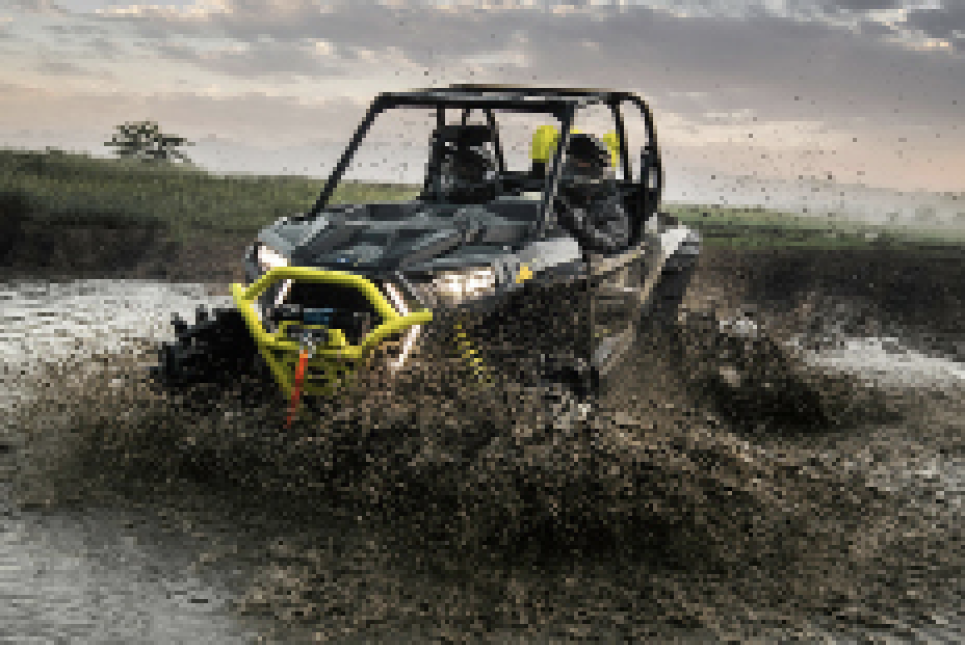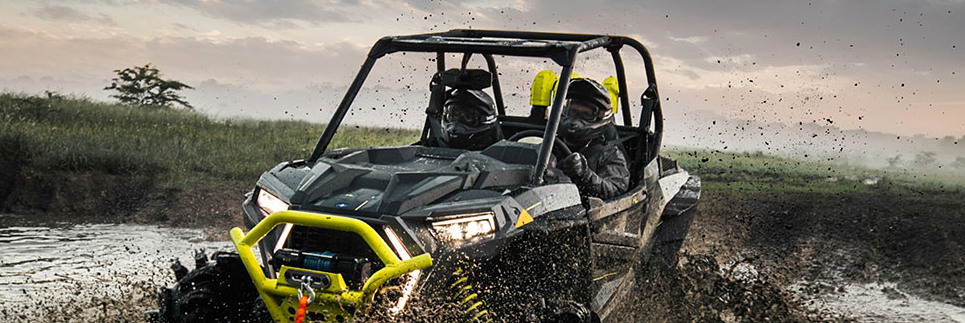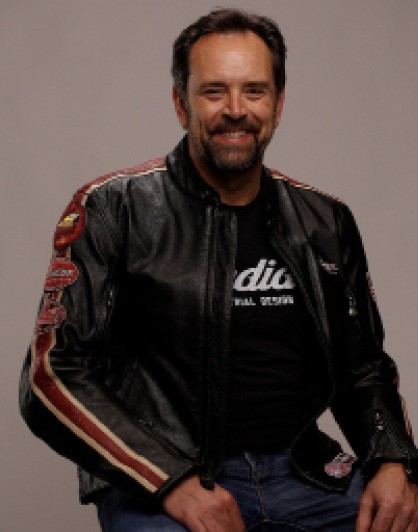Seventeen years ago, working at my former employer, German automaker BMW AG, I was feeling like it was time for a change. I had spent the greater part of my professional career overseas in automotive design, and BMW had been very good to me. I’d had assignments in the UK for BMW subsidiary Rolls-Royce, and I had recently returned to the USA to gain experience running a studio in California. But returning to Germany at the end of this time to run the 3, 5 or 7-series studio didn’t feel like the step I wanted to take, and I started to look at what was going on outside automotive design.
The New Job
One job was at Polaris Industries, which was a client of the BMW studio I ran in California. In my experience, they had been terrible to work with, spending a big chunk of money then failing to follow-up to find out if the design was feasible or cohesive. I consulted with my mentor, Imre Molnar from Art Center College in Pasadena, California, with whom I’d worked on and off following school. He told me: “Go for it! These people make all the things you’ve been riding your whole life.” He was right; I’d been a gearhead since birth, and motorcycles, off-road vehicles and such have been my thing most of my life. But I told him: “These guys are terrible,” and explained my reasons why. His reply: “That’s why you need to go there—to fix them.”
To my surprise, the first visit and the interview were impressive. There were other companies I was looking at, too, but this place was pretty special: a young and smart executive staff and a very accomplished CEO, Tom Tiller, who came to Polaris straight from Chainsaw Jack Welch’s GE. They were building a strong base for the future, and they were doing it to win.
My wife probably wasn’t expecting me to come home and say what I did. I told her if Tom Tiller were to walk down the stairs at Polaris’s headquarters and announce to everybody “We’re going to build a space shuttle!” everyone would say “Hell, yeah!” and go get busy. I told her I wanted to be part of that energy and optimism. I’m sure a Polaris space shuttle would not have looked like a regular one, but dammit, they’d figure it out and do it. My old boss at BMW (and at Fiat SpA, where I’d worked before that) had said that, in the future, “Fiat would be mining rocks on the moon when BMW was in a museum.” In Polaris, I saw an example of a forward thinking company like Fiat, right in front of me.
I started to take Polaris seriously and decided it was where I wanted to go. Then I got the word that they had selected someone else. I was angry; I wrote the CEO a one page letter that used the F-word in it. I told him that job belonged to me.
The Second Interview
My champion on the inside, the VP of motorcycles, told me that the selected guy was waffling and maybe wasn’t going to come. His wife wanted to stay in Detroit, or something like that. I got a call from the recruiter and, with his support, I got back in front of the CEO. He was wearing sweats and a Wild Hockey hoodie with his cap turned backwards. My recruiter said if I could last 30 minutes with him, I’d be okay.
When I walked in he had my letter on his desk and said “This is why I wanted to call you back.” We talked for over an hour and I left with the job. That was 15 years ago. And I’ve owned that job every day I’ve been here.
The optimistic, powerful company I had imagined I’d be joining really did turn out to be just that. We didn’t build a space shuttle, but our CEO demanded more out of us than many thought possible, and we delivered on that and more, growing straight through the recession. We did things the big three (Ford, GM and Chrysler) couldn’t do, and things even the mighty Honda couldn’t do, beating them in the lucrative Side-by-Side Sport motor vehicle market. We beat companies many times our size as a matter of course, and over the years we became a Fortune 500 company valued at over $6.5 billion.
Riding, Roseau and the Culture of Polaris
First of all you have to realize that Roseau, Minnesota, in the far north of the state, is the heart of Polaris. Without Roseau, there would be no Polaris. Without the people there, we would not exist, nor could we be as good as we are.
Riding is a big part of Polaris culture. Back in the day, when I first arrived, it was a rite of passage. During your first trip to Roseau and the first snowmobile ride with the engineers up there, they would try to kill you just to see if you’d survive.
Everyone told me in advance how it would work: the engineers would instruct me to meet them at the “sled corral” out back, where I’d pick a sled out of a huge pile. I’d been told that they’d all be already suited up and on their machines, warmed up and ready to go.
Custom dictated that I would wind up with the snowmobile (or “Buggy” as they say) with a bent ski, something I wouldn’t find out until after I’d filled its tank with gas (which would be necessary because the tank would be empty). By the time my machine was gassed up, they’d all be revving their sleds and circling around impatiently outside the guarded gate in the parking lot. As I joined them, there would be a brief exchange about where we were going, and then everyone would roar off at full-speed. Most of the time, I was told, leaving the plant meant riding alongside the highway in one direction or another, in the ditch. Every roadway that connected to the highway involved a huge jump on the snowmachine (another word for a “sled” up North), and the engineers knew where they all were. Intimidating.
For me, this rite of passage played out exactly as I had been told it would; in fact, the briefing I had been given proved to be almost bizarrely accurate. My year-old sled had a bent right ski; its gas tank was empty, and it took 10 pulls to start the engine because it was minus 22 degrees Fahrenheit, and they all took off at top speed.
I expected all this, though, and I had a plan. I held on to the group and at the first pause, when we turned west, I asked the guy next to me if we could swap because I saw he had the new model for that year and I wanted to see how it rode. This was bullshit, of course, because I had never ridden a snowmachine before. I was just a guy that happened to be able to ride well right off the bat. At lunch the guy I switched with said, “This sled has a bent ski; it’s terrible, I can’t believe we gave it to you,” which was permission for me to keep his sled the rest of the day. This saved me for that ride.
While Polaris has become a bit less hardcore as it’s grown, a surprising amount of that attitude is still in evidence. I have since learned that if you try and hang with the guys from our Swiss motorcycle engineering group on a fast ride in the Alps, you may have an experience similar to mine in Roseau.
The Studio and Designers
During the fifteen years I’ve been with Polaris, my group has gone from four people in one studio to 55 people in four studios, one of them in Europe. We handle design for over 20 of our 25 brands, and execute the design of all whole-goods (vehicles) for Polaris, with the exception of our new boat brands. Our group includes Digital Design, responsible for the UI/UX (user interface/user experience) of our gauges, Infotainment, App and Web. With fewer than half the designers working for our next biggest competitor, our department is twice as fast, helping Polaris be segment leaders in many markets due to our ability to innovate within our competitors’ development timeframes—often making a second or third-generation machine when others have just entered the market.
The secret, of course, is the people. When I arrived, the words that were being used to describe our ambitions were “world class,” as in “We want to be world class.” Having been with BMW for eight years, I knew what it took to get there: you might not think that BMW makes the best cars in the world, but the cars it makes are certainly “world class.” I knew that this level of excellence didn’t happen between nine and five, and that it took more-than-average people working long hours to get there. The thing that I worried about was: could I get people like that to come to Minnesota? Out in the middle of the prairie?
Vehicle Designers aren’t endemic to Minneapolis, or Minnesota, so achieving that goal meant importing people. The few people I inherited were really good, and I mean “world-class” when I say that, so the base was there. The first few staff additions were slow in coming, but I found a master-class clay modeler who had started the BMW clay modeling studio in California. He was hidden in a small town near Detroit, commuting to the city. I quickly grabbed him. Then came a talented Australian guy working in Italy, an up-and-coming young manager from our watercraft business, a couple killer CAID (Computer Aided Industrial Design) people
from Detroit, and lots of interns who would eventually become designers. They all began to set the path.
We became the desired internship for the two best design schools in the country, Art Center College of Design in Pasadena, California and College for Creative Studies in Detroit, and capitalized on that, starting eight of our twelve designers as interns. Four additional interns have taken other positions in Industrial Design. I had thought that we’d grow faster—the rest of the company doubled in size between 2009 and 2013—but we wanted the best, so it took time.
When I bring people in for interviews, I admit that I like to try to get them here during the summer—preferably the August/September time frame. It’s warmer and dryer than during mid-summer, and so beautiful you can get just about anyone to fall in love with the Midwest. We go for a motorcycle ride around Lake Minnetonka, through downtown Minneapolis, over to Hudson, Wisconsin, and then up the St. Croix, all the way to our Wyoming Engineering center for a tour. That usually does it.
While we’re there, I normally take them out for an off-road demo ride. Most of the time I like to go in a RZR as I’m familiar with them and can give a pretty good demo. That normally boosts the folks that really like to ride a bit closer to signing.
In my department it’s important to have good people on staff for more than the obvious reasons, and they’re not motivated solely by money. Powersports Design is a small world, and everybody knows where everybody else is. If you’ve been able to attract really well-known, quality people, then others will come because they’ll want to work with them. And this cycle will perpetuate as long as the flow continues and you keep them happy. This last August, I had the honor and pleasure of awarding two 20-year awards and one 15-year award in my group. Those original guys I mentioned above stayed with me, and between the core group of those roughly 12 people who’ve been there 12 years or more, we have done over 100 complete vehicle designs.
Today
When it snows we are all smiling (after all, we are still a snowmobile company in our hearts, and many people will always think of us that way).
We are not flashy. Our CEO, whose compensation is public record, could afford something other than the six-year-old Audi sedan he drives every day. The parking lot at headquarters has lots of pickup trucks in it, so people can haul trailers with their toys in them. Our building is nice, but not particularly fancy.
Every year we gain more technology, more electric vehicle companies, more large international acquisitions, but when you come to do business with us there’s a particular sensibility that comes out. You’ll know you’re in the Midwest, on the prairie.

The Polaris Rzr XP-1000. Photo courtesy of Polaris, Inc.


